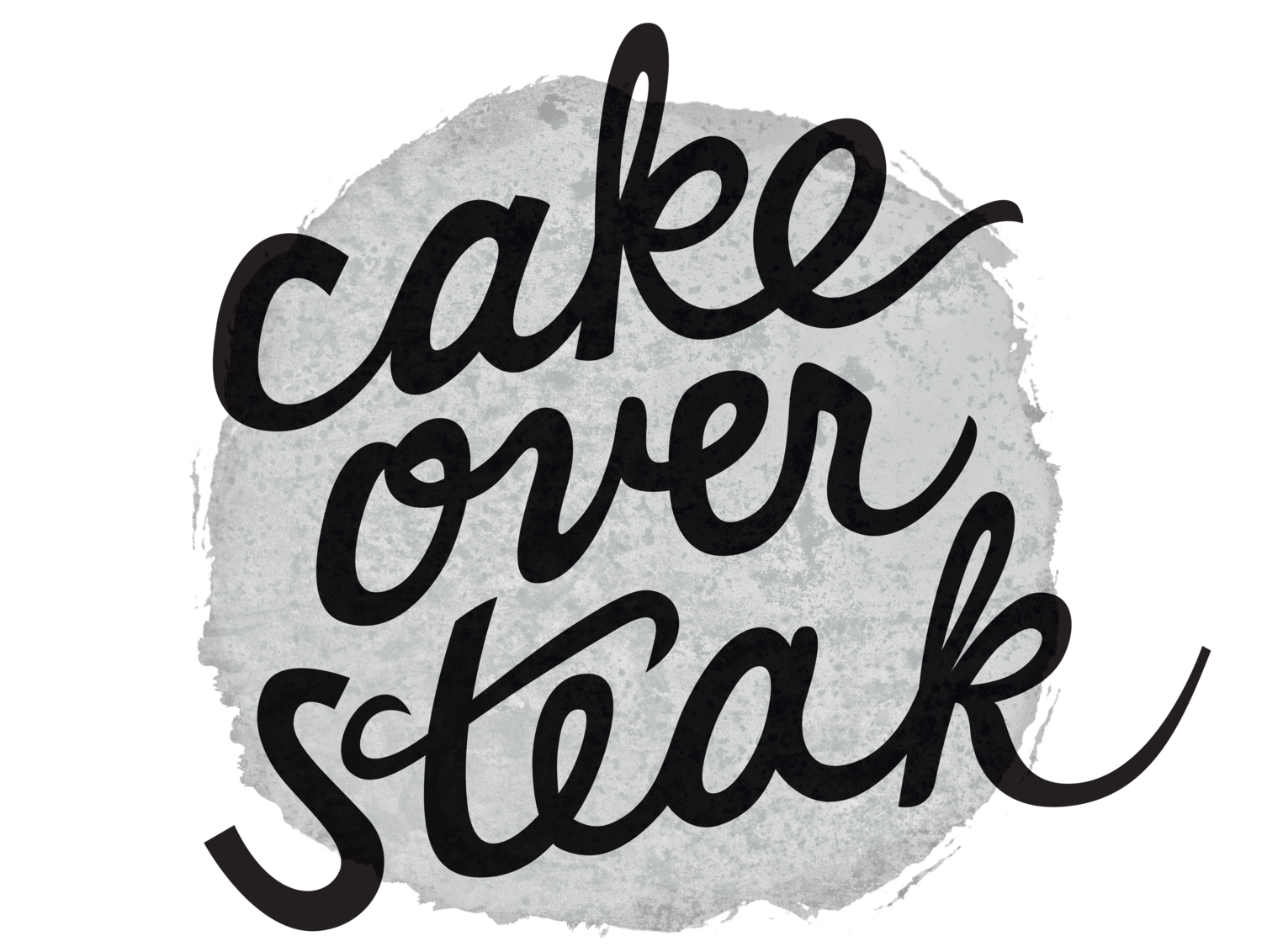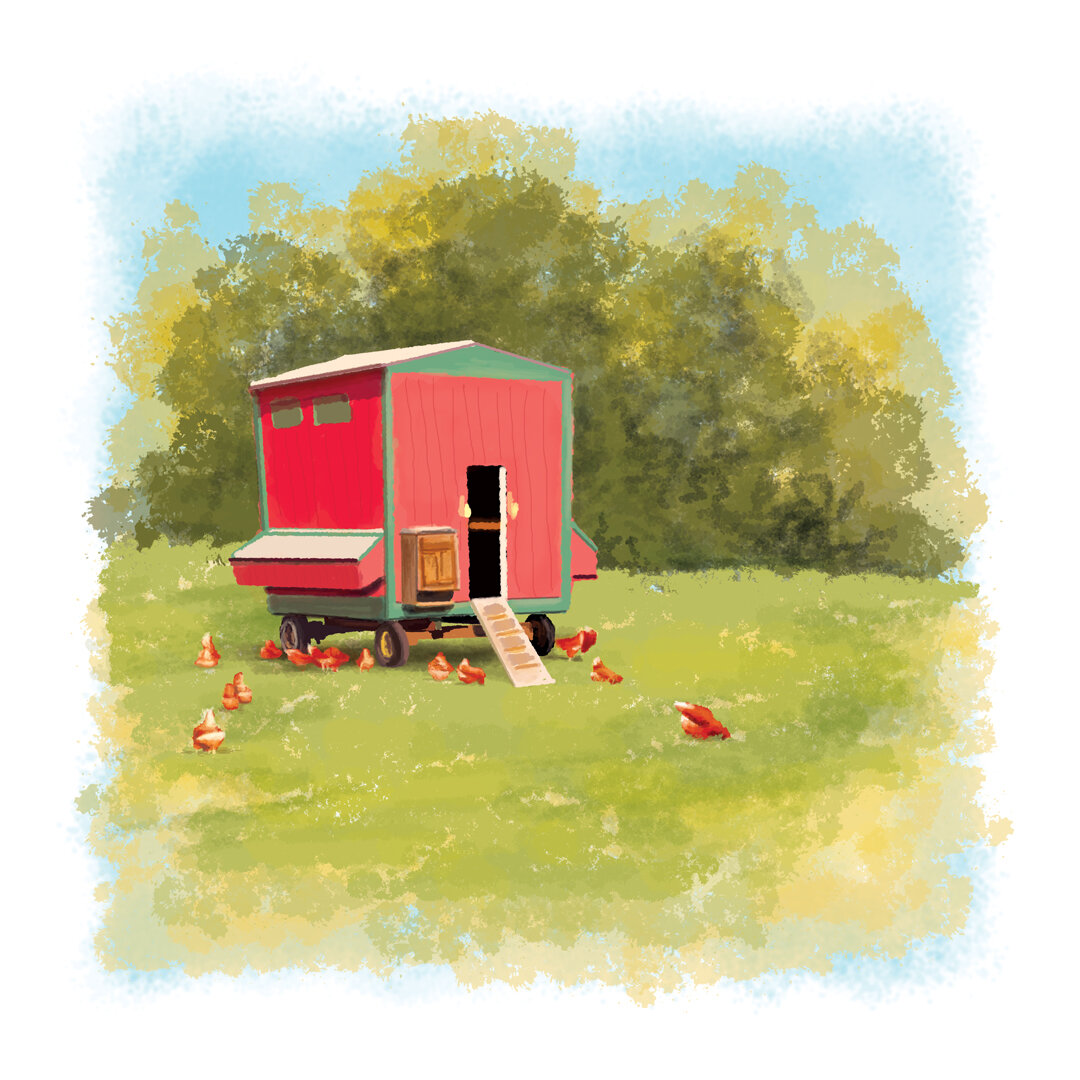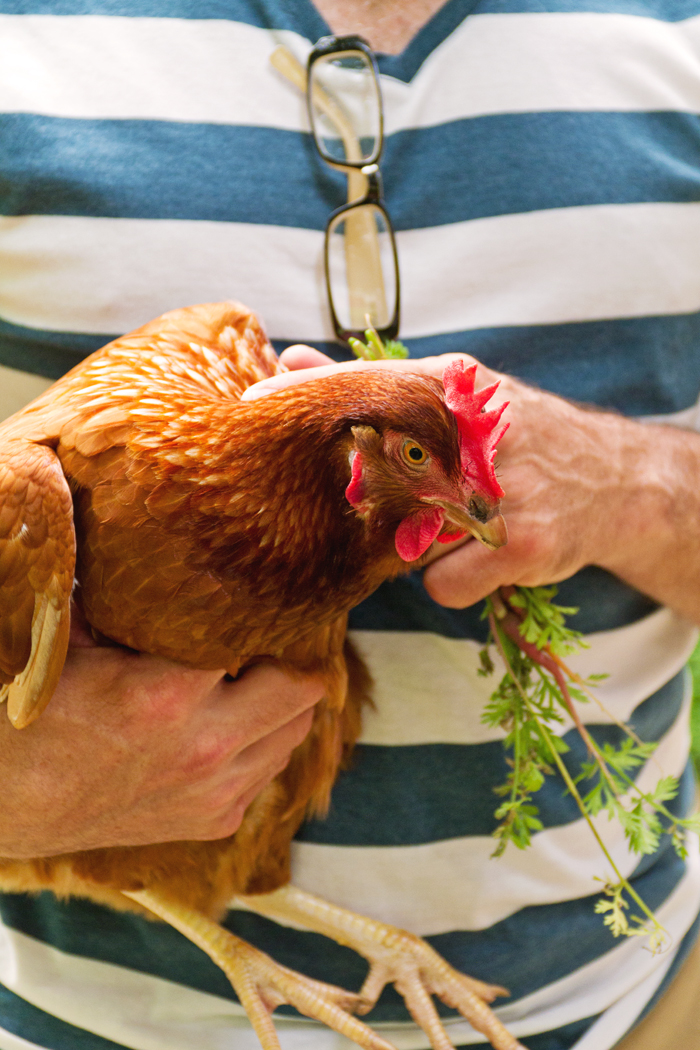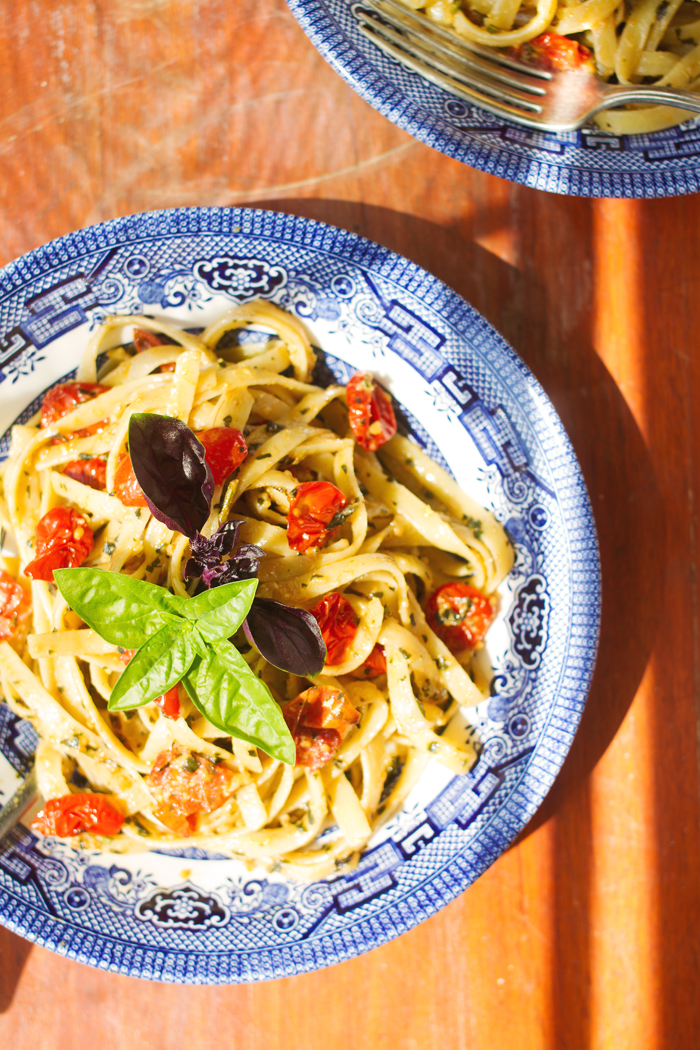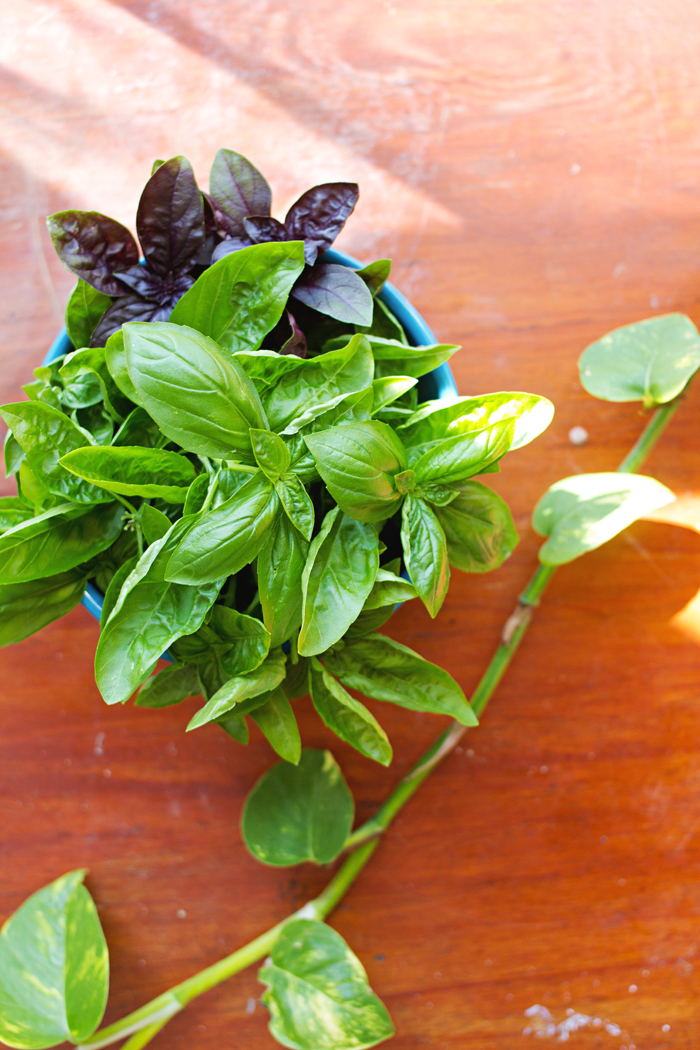Pesto Pasta with Slow-Roasted Tomatoes + A Visit to Bare Foot Organics
I learned about CSAs (Community Supported Agriculture) back when I first started getting into cooking and was reading food blogs like a madwoman. I was a broke college student in Philadelphia at the time, and I was kicking myself that I hadn't signed up for a CSA to feed me through my senior year. I loved the idea of getting a weekly box of vegetables (with some items I may never have bought on my own), figuring out what to do with them and learning along the way. Since I couldn't sign up for one at the time, I just fantasized about the day when I would be settled somewhere after graduation and could find one to join.
And then after graduation I got a job in my small hometown of Lebanon, PA and moved back in with my parents. (Womp womp.) (Love you Mom and Dad!) For some reason I thought CSAs were more accessible in larger cities like New York or Philadelphia, where the farms could depend on a larger audience (and maybe that's true to some extent). I never thought I'd find a CSA in my own backyard, but that's exactly what happened.
I eventually moved out of my parents' house and into Robert's apartment. Cooking for myself became a necessity again (no more dinners prepared by Mom), and I couldn't have been more excited about having my own kitchen once more. I moved into Robert's kitchen before any other spot in the apartment. Now it seems to be bursting at the seams. Thankfully he was fully supportive of the idea of joining a CSA, so I did some research. And what do you know - Bare Foot Organics was a local farm about 5 minutes down the road from us, and they offered a 21-week CSA from June through November. We signed up for it that January and then counted down the months until we received our first box in June. We are currently finishing up our third CSA season with Bare Foot Organics.
I can tell you for a fact that we eat more vegetables and a greater variety of them during our CSA weeks, and we often have items leftover from week to week that we weren't able to use yet. It's a wonderful experience, and you get a lot of fun items you won't find in the supermarket (like garlic scapes), at least in our area.
You can't help but eat seasonally when you're getting a huge box of vegetables that were just picked for you that week. In the late spring we eat a TON of salads as our box is mostly greens at that point, and we get to enjoy some of the freshest, sweetest strawberries you''ll ever find. The summer is all about tomatoes, fresh basil and peaches. Every meal in the height of summer probably has at least one of those items in it. In the fall we get winter squash and root vegetables plus heads of cabbage and garlic that will last us for weeks after the CSA has officially ended.
Since cooking for myself in this way and joining the CSA, I can feel my body re-learning how to eat with the seasons. As the weather changes from winter to spring I find myself craving asparagus and strawberries and lighter meals. Then as the summer turns to fall I feel myself wanting warm soups, roasted vegetables and braised meats. The body knows what it wants for each season, and if you listen it will tell you.
The other thing I love about our CSA is actually knowing the people who grow our food; it just feels so personable. I stop by the farm to get my box on my way home from work. I see the chickens out in the yard who supply me with eggs for the week, and I have to dodge the few who like to sneak out of their fenced-in area. I can email my farmer to ask him about a certain vegetable and what I should do with it. It's a whole experience.
I recently popped by the Bare Foot Organics farm to talk to the major players: Phil the farmer, his wife Barbara and his sister Marcia. I took some photos before a crazy thunderstorm rolled in while the cats followed us around, and we chatted about Bare Foot Organics - how it got started and where it's headed. We also had some wonderful conversations in general, about modern farming and food culture, what the concerns are in those departments, how food affects our bodies and eating in season. These are the kinds of people I want growing my food.
SOME HISTORY
Phil used to work in marketing and Barbara is currently still a teacher in the NYC area. After losing a friend during the 9/11 attacks, they began to reevaluate their lives and considered going in another direction. They've always been "foodies," so they decided they wanted to grow food for people; they felt that would give them a sense of purpose. "It felt like we were doing something that mattered," Phil told me.
Although Phil grew up in Canada, he had family connections to this area. He and Barbara bought the farm (originally a 110-acre dairy farm back in the 1830s) in 2007 and started production in 2008. Do you want to know something really weird? The date stones on the house and barn say "built by Phillip and Barbara Brechbill." PHIL AND BARBARA. Weird, right?! Perhaps it was meant to be all along.
THE PRODUCTS
Back when they started the CSA in 2008 they were only growing tomatoes and peppers. They worked with another farmer to be able to give the customers a full CSA box. Since then they've built up a full product range. This year they were resting their fields and didn't grow any of the CSA vegetables on their actual land, but partnered with nearby Landisdale Farms to produce all of their food.
Phil's cousin Jim has a farm with a lot of fruit (52 varieties of peaches!), so they partner with him to provide a fruit share to everyone. They also work with someone to provide grass-fed beef to customers, but are working on getting their own beef cattle soon. So as they continue to grow their business, they've worked hard to make sure they're supplying their customers with as much as possible.
This summer was their third season with chickens. They were one of the highlights of my visit. A few of the chickens like to break out of the fenced-in area, and there's one particular chicken who sneaks into the barn every morning to lay her egg on her favorite pile of hay. They also like to drink the water that's been put out for the cats. I can personally vouch for these eggs. It was our first year adding them to our box and it was a treat. You just can't beat fresh, pasture-raised eggs like that.
Are you interested yet? The CSA is currently available in NYC and for local pickup at the farm in Lebanon County.
FINDING PURPOSE
Bare Foot Organics isn't content to be stagnant. They have big dreams for where they'd like to see the farm in the future. They would love to take the CSA into food deserts in areas like Philadelphia and NYC where people can't afford fresh, organic food. Ideally they would find someone to subsidize the cost, so for example a box that would cost $40 would only cost $20 in that area of need.
Education is also a big passion of theirs. A learning garden is in the works, which they would use to teach kids and help them understand where their food comes from. They already give occasional talks at local schools about sustainability and organic farming.
The wonderful people behind Bare Foot Organics are not trying to make a profit or become millionaires. They're just trying to improve our food situation and make a difference in the area. It's an admirable cause.
THE COST
Community Supported Agriculture might sound a little fancy, and the thought of paying a fixed cost for a box of vegetables every week might cause some people financial anxiety. "Isn't organic food expensive? Will it even feed my family for the whole week? I'm not sure I want to commit." Well, I can assure you there's nothing to worry about. By "subscribing" to the CSA for the full twenty-one weeks up front, this allows the farm to lower the initial cost because they know they can count on you. Plus, you're technically buying vegetables in bulk. Furthermore, you're supporting a local business in the process, which is awesome.
But in case you're still concerned, I did the math for you. I took stock of everything I received in my box one week, and then I priced it out at a local Giant supermarket and at Whole Foods in Philadelphia.
Here's what came in my box:
• a dozen eggs
• 4 peaches (1 lb 7.6 oz)
• 2 small heads of lettuce (7.9 oz)
• a bunch of swiss chard (11.75 oz)
• 3 tomatoes (1 lb 9.75 oz)
• 2 medium eggplants (1 lb 12 oz)
• small basket of grape tomatoes (12.5 oz)
• potatoes (2 lb 2 oz)
We get the "medium" share, so the price for us last year with our egg share came out to be $29.14 per week.
The cost at the local Giant for this haul would have been $29.43, and 62% of the items were organic. At Whole Foods in Philly it would have set you back $37.65, and surprisingly only 38% of it was available as organic.
So you're definitely not paying MORE for your CSA vegetables, and you're getting fresh, high quality, organic LOCAL food 100% of the time. And, like I mentioned before - you're supporting a good cause in the process. It's a no-brainer, honestly.
Are you interested now? I hope so. The lovely people at Bare Foot Organics were kind enough to supply you, my dear readers, with a discount code. If you sign up for the 2016 CSA season, use the coupon code "scblog" to get 10% off your subscription. It's worth it; I promise.
RECIPE FOR PESTO PASTA WITH SLOW-ROASTED TOMATOES
Ah, this recipe. Let me tell you about it. Robert began to love tomatoes because of the gorgeous sun golds we got in our box during that first summer with our CSA. I don't think either of us had ever eaten tomatoes quite so perfect before that. We decided to slow-roast them, which can turn even terrible out-of-season tomatoes into something sweet and wonderful.
That first summer we also received some beautiful bunches of fresh basil. We got into the habit of immediately making a huge batch of pesto with it, knowing it wouldn't last long otherwise. We put that pesto together with the slow-roasted tomatoes in a pasta and never looked back. We were extremely sad when that first rendition of this pasta disappeared.
Now we look forward to making it as often as we can every summer. As soon as we have a handful (or two) of grape tomatoes and some fresh basil, this pasta comes out. We've also done it with zucchini noodles, and sometimes we add corn and/or chicken. But to be honest, it needs nothing more than the fresh pesto and tomatoes, plus a small topping of freshly grated Parmesan cheese. I like it even better cold, which means it makes for the perfect lunch as leftovers.
It is one of our favorite meals (probably THE favorite) to make with our CSA. Our rooftop garden has evolved to be mostly tomatoes and basil to supplement our CSA, allowing us to make this meal as often as possible. (The other portion of our garden is mostly mint. For mojitos. These are our priorities.)
If you're lucky enough to still have fresh basil and tomatoes near you, I would urge you to whip up this pasta as soon as possible. If you're in an area like mine where the trees are rapidly losing their leaves, then file this one away for that first bunch of fresh tomatoes next year. It's a keeper. Oh, and did I mention how easy it is? Ridiculous.
Don't forget - if you're interested in signing up for the 2016 CSA season, use that coupon code "scblog" for a 10% discount. If you refer a friend, a credit will be applied to your account that you can then use towards the purchase of eggs or fruit, etc. Thank you, Bare Foot Organics! Keep doin' what you're doin'.
FULL DISCLOSURE: This is NOT a sponsored post. I just love my CSA and wanted to spread the word. However, Phil and Barbara did give me one of their "soup chickens" from their freezer stash as a thank you. We turned it into chicken stock and then turned that into a variation of this soup.
Illustration at top created with Photoshop.
Prints of my illustrations (along with other products with my work on them) are available in my Society6 shop.
Pesto Pasta with Slow-Roasted Tomatoes
Makes about 4 servings
INGREDIENTS
For the tomatoes:
2 pints cherry or grape tomatoes
olive or grapeseed oil
sea salt
For the pesto:
about 2 cups of fresh basil leaves
1/2 cup pine nuts
1/3 cup olive oil
1 garlic clove, sliced
1/4 tsp fine sea salt
1/2 cup parmesan cheese
For the rest:
1 box of your choice of pasta
1 cup reserved pasta cooking liquid
extra cheese and salt to taste
INSTRUCTIONS
Heat your oven to 250°F. Chop your tomatoes in half and place them on a parchment-lined baking sheet. Toss with a tablespoon or two of oil so they are well coated. Flip them all so the cut side is facing up, making a little bowl of the seeds. Sprinkle with sea salt. Roast for 1.5-2 hours until they are significantly shriveled.
When your tomatoes are almost done, heat a pot of water to boil for the pasta. Cook the pasta according to package instructions to make it "al dente." We start checking ours after about 7 minutes in the water. Before you drain it, reserve about 1 cup of the cooking liquid and set aside.
While your pasta is cooking, make the pesto. Submerge your fresh basil leaves in a bowl of cold water for a minimum of five minutes. Place the nuts, oil, garlic and salt in a food processor or blender and process until the mixture is very smooth. Shake the water off the basil and add it to the nut/oil mixture. Give it about five pulses, just until it's evenly combined and the mixture is light green. Add the cheese and mix just until combined, another few pulses. Taste and adjust seasoning as needed.
After draining your pasta, immediately put it back in the warm pot. Add a large scoop of pesto and mix around. Add a few splashes of your reserved pasta water, which will help to pull everything together and make your pesto coat the pasta nicely. Add in the tomatoes. Keep adding pesto and cooking water until your sauce is the strength and consistency you want. Salt the pasta as desired. Store any leftover pesto in the fridge.
Top your bowls of pasta with extra cheese and fresh basil, if desired. Leftovers make a great cold lunch the next day.
NOTES
pesto adapted from Keys to the Kitchen
